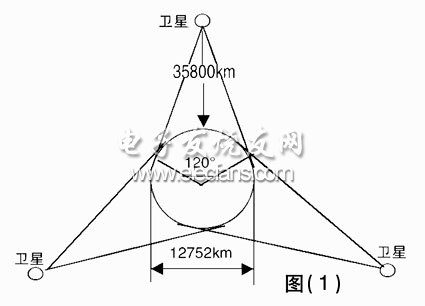The radio and television industry is one of the most rapidly developing undertakings in China. Among them, the high-tech content is also an industry with high gold content in various industries. As a worker engaged in satellite communications in the communications industry, I am honored to be able to play a role in the contemporary society where the television industry in China is booming. At the same time, many people are very concerned about some of these technologies but not very understanding. The author wants to briefly explain some core technologies of satellite digital TV and the problems of DVB-S system from the basic concept.
Basic Principles of Satellite Communication
Satellites can be divided into: satellites for resource exploration, meteorological satellites, military satellites, communication satellites, direct broadcast satellites, etc. In theory, if three satellites spaced 120 degrees apart are placed on a satellite orbit above the earth's equator relative to the geostationary earth, global communications or global broadcasting can be achieved. Figure 1):

Satellite TV transmission is developed on the basis of satellite communications. It is a technology that mounts transponders and antenna systems on the stationary satellite at 35,800 km above the earth's equator to transmit broadcast and television signals to the ground, directly covering large areas of broadcast and television. . It can cover a large number of users in the area to directly watch radio and television programs thousands of miles away or even on the other side of the earth. China has a vast territory, complex terrain, a large population, and a very uneven distribution. It is extremely difficult to completely rely on the traditional terrestrial wireless transmission method to solve the broadcast and television coverage. Using satellites to transmit radio and television programs, as a most effective, economical, and advanced means to improve the coverage of radio and television population and improve transmission quality, it has been vigorously developed and widely used in the past decade.
Introduction to DVB
The DVB organization is an international organization with 230 organizations from 33 countries. The State Administration of Radio, Film and Television joined the DVB organization on April 13, 1999 as a member of the association. At the same time, DVB (Digital Video BroadcasTIng) is also the European digital video broadcasting standard. The main standards include satellite TV DVB-S, cable TV DVB-C, terrestrial broadcast DVB-T and HDTV. For transmission, the numbers of the above three transmission standards are ETS300421, ETS300429 and ETS300744ETS are European telecommunication standards. DVB-S is a set of digital broadcasting technical specifications formulated to change the analog TV technology due to different standards, and it is responsible for promoting it to become an international standard for digital broadcasting technology, promoting international exchanges in broadcasting and television technology, cooperation and The task of development.
The main goal of the DVB project is to find a digital TV technology and system that is suitable for all transmission media. The requirements for it are:
1. Flexible transmission of MPEG-2 video, audio and other data signals.
2. Use unified MPEG-2 transmission bit stream multiplexing.
3. Use a unified service information system to provide details such as broadcast programs.
4. Use a unified first-level Reed-Solomon forward error correction system.
5. Use a unified scrambling system, but different encryption methods are available.
6. Choose the modulation method and channel coding method suitable for different transmission media and any necessary additional error correction methods.
7. Encourage the use of DVB standards outside of Europe and promote the establishment of worldwide digital video broadcasting standards.
8. Support teletext system in digital system.
Water-cooled capacitor is supercapacitor is a capacitor with a capacity of thousands of farads.According to the principle of capacitor, capacitance depends on the distance between the electrode and electrode surface area, in order to get such a large capacitance, as far as possible to narrow the distance between the super capacitor electrode, electrode surface area increased, therefore, through the theory of electric double layer and porous activated carbon electrode.
Water-Cooled Capacitor,Water-Cooled Power Capacitor,Water-Cooled Electric Heat Capacitor,Water-Cooled Electric Heating Capacitor
YANGZHOU POSITIONING TECH CO., LTD , https://www.yzpstcc.com